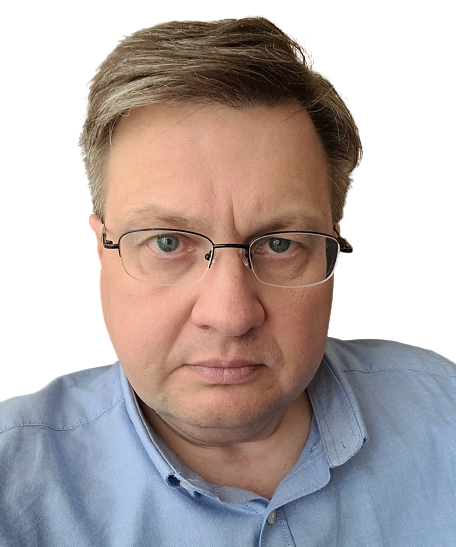MODULAR DATA PROCESSING SYSTEMS AND CONTROL SYSTEMS
 |
|
Akop G. Mamikonov, Founder and first Head of Laboratory No. 20 |
The Laboratory was established in July 1961. Its founder and permanent Head until 1992 was Akop G. Mamikonov, Dr. Sci. (Eng.), Prof., and Honored Scientist of the Russian Federation. In 1992–2019, the Laboratory was headed by Vladimir V. Kulba, Dr. Sci. (Eng.), Prof., and Honored Scientist of the Russian Federation. Since 2019, the Laboratory has been headed by Cand. Sci. (Eng.) Igor V. Chernov.
In 1961–1966, the Laboratory was engaged in developing remote control systems and network planning and control systems for the national economy sectors.
Since 1967, Laboratory’s research interests have been mainly focused on the theoretical, methodological, and applied foundations for developing and implementing modular automated information and control systems (AICSs) of wide class and purpose, including those operating under uncertainty and various emergencies. A unified methodology and the formulated features of modularity and typification were used to solve theoretical and applied problems associated with the formalization of analysis procedures, problem statements, models and algorithms for designing optimal-structure general-purpose modular AICSs with specified efficiency criteria, dialog systems, and hard real-time systems.
 |
|
Vladimir V. Kulba |
The theoretical foundations of information control were developed. Informational control is an integrated strategy based on the indicators of relevance and value of information for managerial decision-making and goal-achieving. The main characteristics of methods, objects, and organizational structure of information control were determined. Organizational mechanisms were developed to implement information control in socio-economic systems.
The design problems of optimal logical and physical structures of local and network databases were stated, and effective methods for solving the problems were proposed. These problem statements and methods allow: determining the optimal number and structure of logical records and the structure of links between them; forming optimal structures of requests, correction commands, and their specifications in the client-server architecture; determining the optimal structures of placement, storage, and processing of database records, files, and the network directory in the external memory of the computer.
 |
|
Igor V. Chernov, Head of Laboratory No. 20 |
The logical structures were designed by minimizing the following main criteria: the total time of loading information in the database and serving a given set of user requests; the total volume of redundant information transferred through the network; the response time for requests arriving in real time, the total length of access paths to the required information elements, and others.
The obtained results were used to create an industrial automated design technology for modular AICSs. It provides a comprehensive solution to automate the development, implementation, maintenance, and modification of control systems projects based on the latest achievements in computer technology and the principles of modularity and typification. This technology has the following features: the minimum total labor cost and duration of developing information support and software for information and control systems; high quality and reliability of software complexes and their information support; the unified development of information support and software for unique and typical AICSs of different purposes.
The following methods were developed to design typical modular AICSs: the formal analysis of the requirements to algorithms for performing a given set of tasks; evaluation of the degree of their information, procedural, and technological generality; the optimal structure design of software and information support. These methods accelerate the development and debugging of software and information support for AICSs on average by 1.5–2 times and reduce the total period and costs of developing typical AICSs by 5–10 times.
This technology and the principles of modularity, typification, and cloning were employed to develop Module, a computer-aided design (CAD) system that sharply increases the quality of AICSs design and reduces the period of their development. This CAD system was successfully used to develop and implement AICSs for emergencies and education. Note that typical functional subsystems of simple structure are developed in 1–3 days.
The studies of real-time AICSs laid theoretical foundations for modeling as well as yielded methods for analyzing, synthesizing, and debugging optimal modular AICSs for special objects (spacecraft).
The models, methods, and tools for creating modular software and information support for an onboard control system were developed by examining these special control objects.
The obtained theoretical results were used to develop and implement many automatic control systems (ACSs) of national economic importance (Metal, Metro, Exchange, Resource, the AICS of Emergencies (Kazakhstan), the Chinese State Management System of Emergencies) and special-purpose systems (the Ministry of Defense of the Russian Federation and Korolev RSC Energia).
As a result of these works, Prof. Akop G. Mamikonov and other researchers of the Institute were awarded the USSR State Prize; Prof. Vladimir V. Kulba was awarded the RAS Prize named after Acad. B.N. Petrov (2007).
The information security of organizational control systems (OCSs) is an important topic of Laboratory’s research. The following problems are investigated here: information security in organizational control systems at the legislative and corporate levels, information security and control, information protection against unauthorized access, and information reliability and safety.
The goal of such studies is to develop new methods and techniques of information redundancy and protection at different representation levels as well as methodological recommendations on information security, including protection against aggressive informational impacts on various society structures.
In this area, formalized methods and tools were developed to ensure the reliability and safety of information when processing data in OCSs. The concepts of a data control and protection mechanism and a standard data processing scheme were proposed. These concepts were used to develop a methodology for assessing the reliability of different data processing structures and different laws of occurrence and interaction of errors.
A wide range of redundancy issues was examined for software modules and information arrays in AICSs as a systematic method to increase data safety. The main redundancy strategies were identified, and their effectiveness was analyzed by various criteria. Methods were proposed to calculate the main probabilistic, time, and cost characteristics of the strategies. The key destruction factors were studied for software modules and information arrays, and recommendations on using the methods of protection against their impact were given. The following problems were stated and solved: choosing redundancy strategies; optimizing the number of copies and (or) history (dumps) of the main data array. The optimal redundancy of programs and data arrays in real-time data processing systems was considered.
An important research area of the Laboratory covers methods and models of planning and control of measures to prevent and eliminate the consequences of emergencies. The methodology, apparatus, and applied methods were developed to create systems and organizational control means for such measures at the object and regional levels. The scenario of emergencies was formalized at the conceptual level. This concept was adopted to model emergencies development and elimination of their consequences, including the formation of baseline emergencies scenarios at the object and regional levels, and identify their focal structures. The methods, models, algorithms, and programs developed in the Laboratory accelerate the modeling of possible emergencies scenarios, focus resources on the most dangerous areas, and improve the quality of preventive and operational plans to counter emergencies. As a result, the total ultimate losses and damage caused by emergencies (their occurrence and development) are considerably reduced. The methods, models, algorithms, and programs were used to develop re-planning means for agricultural production in emergency conditions based on aerospace data.
The results mentioned above formed a new research area of the Laboratory, successfully developed in recent years. This research area concerns mathematical models and control mechanisms of complex socio-economic systems based on the scenario approach. Its fundamental novelty consists in forecasting the behavior of such systems by forming a spectrum of scenarios, including baseline ones. The spectrum is subsequently analyzed to assess the effectiveness and coordination of distributed managerial decisions (in time and space) when selecting and implementing strategic complex development programs of large-scale socio-economic systems. (Experimentation on real objects is almost impossible, economically inexpedient, or even socially dangerous.)
Models and methods were developed to select the optimal scenario from a given set of alternatives. This problem was reduced to vector optimization considering the spatial characteristics and properties of the scenarios. A hardware-software complex of scenario analysis and forecasting was developed. This complex implements the scenario methodology for socio-economic systems of different classes and purposes.
The models, methods, and algorithms were used for strategic planning and development management in socio-economic systems of different classes and purposes. Laboratory’s scientific and practical solutions were adopted for creating strategic management methods and means for the development of regional socio-economic systems.
The results obtained were used in federal structures involved in the planning of socio-economic systems and special-purpose systems (Security Council of the Russian Federation; the Ministry of Defense of the Russian Federation; the General Staff Academy, the Ministry of Defense of the Russian Federation; the Ministry of Digital Development, Communications and Mass Media of the Russian Federation; the Social Insurance Fund).
The Laboratory has extensive international scientific and technical relations with Hungary, Serbia, Montenegro, China, Poland, France, Latvia, Kazakhstan, Ukraine, and other countries.
The Laboratory organizes national and international conferences on modular data processing systems, automation of control systems design, complex systems security management, and regional and municipal management. Over 60 conferences have been held so far, including 29 International Conferences on Complex Systems Security Management.
In 2017, the Laboratory merged Laboratory No. 51 (Cognitive Modeling and Situation Management). Laboratory No. 51 was founded in 1991 by Dr. Sci. (Eng.) Valery I. Maximov. In 2008–2017, it was headed by Dr. Sci. (Eng.) Nina A. Abramova.
The main research area of the corresponding group is intellectual support models, methods, and tools for the analysis, modeling, and control of the development of complex weakly structured objects, systems, and situations. Within these studies, the models of causal relations between the situation’s heterogeneous factors are the main (albeit not the only) formalism for representing expert knowledge of weakly structured situations. As part of applied works, the group developed a prototype simulation system with independent operation or integration into a strategic decision support system. The main application area of the developed models and methods is expert-analytical support technologies for situational centers (goal-setting and strategic planning in public administration).
The Laboratory staff has published over 1700 scientific papers, including over 130 monographs and textbooks on automated information and control systems, the security of organizational control systems, management in emergency conditions, and the scenario approach. The basic monographs are listed below:
- Metody analiza i sinteza modul’nykh informatsionno-upravlyayushchikh sistem (Methods of Analysis and Synthesis of Modular Information and Control Systems), Fizmatlit, 2002;
- Teoreticheskie osnovy proektirovaniya optimal’nykh struktur raspredelennykh baz dannykh (Designing Optimal Structures of Distributed Databases: Theoretical Foundations), Sinteg, 1999;
- Optimizatsiya struktur dannykh v ASU (Optimization of Data Structures in ACSs), Nauka, 1988;
- Optimizatsiya struktur raspredelennykh baz dannykh v ASU (Optimization of Distributed Database Structures in ACSs), Nauka, 1990;
- Teoreticheskie osnovy proektirovaniya informatsionno-upravlyayushchikh sistem kosmicheskikh apparatov (Designing Spacecraft Information and Control Systems: Theoretical Foundations), Nauka, 1975;
- Proektirovanie informatsionno-upravlyayushchikh sistem dolgovremennykh orbital’nykh stantsii (Designing Information and Control Systems for Permanent Orbital Stations), Nauka, 2002;
- Organizatsionnoe upravlenie (Organizational Control), Russian State Humanitarian University, 2007;
- Informatsionnaya bezopasnost’ sistem organizatsionnogo upravleniya. Teoreticheskie osnovy (Information Security of Organizational Control Systems. Theoretical Foundations), Nauka, 2006;
- Dostovernost i sokhrannost informatsii v ASU (Information Reliability and Safety in ACSs), Sinteg, 2003;
- Upravlenie riskom: Risk. Ustoichivoe razvitie. Sinergetika (Risk Management: Risk. Sustainable Development. Synergetics), Nauka, 2009;
- Upravlenie v chrezvychainykh situatsiyakh (Management in Emergency Conditions), Russian State Humanitarian University, 1998;
- Metody formirovaniya stsenariev razvitiya sotsial’no-ekonomicheskikh system (Scenario Formation Methods for the Development of Socio-Economic Systems), Sinteg, 2004;
- Issledovanie sistem upravleniya (Study of Control Systems), Prior, 2006;
- Sozdanie sistem monitoringa realizatsii federal’nykh tselevykh programm (Creation of Monitoring Systems for Implementing Federal Targeted Programs), Sinteg, 2006;
- Upravlenie i kontrol’ realizatsii sotsial’no-ekonomicheskikh tselevykh programm (Management and Control of Socio-Economic Targeted Programs), Librokom, 2009;
- Matematicheskie metody v upravlenii obyazatel’nym sotsial’nym strakhovaniem (Mathematical Methods in the Management of Mandatory Social Insurance), LKI, 2008;
- Modeli i metody analiza i sinteza stsenariev razvitiya sotsial’no-ekonomicheskikh sistem (Analysis and Synthesis of Development Scenarios for Socio-Economic Systems Models and Methods), Nauka, 2012;
- Informatsionnoe upravlenie v usloviyakh aktivnogo protivoborstva: modeli i metody (Information Control under Active Confrontation: Models and Methods), Nauka, 2011;
- Informatsionnoe obespechenie sistem organizatsionnogo upravleniya (teoreticheskie osnovy) (Information Support of Organizational Control Systems: Theoretical Foundations), in 3 vols., Nauka, 2011;
- Informatsionnyi menedzhment (Information Management), Ekonomika, 2013;
- Modeli i metody replanirovaniya sel’skokhozyaistvennogo proizvodstva v usloviyakh chrezvychainykh situatsii s ispol’zovaniem aerokosmicheskoi informatsii (Models and Methods of Agricultural Production Re-planning in Emergency Conditions Using Aerospace Data), Ekonomika, 2012;
- Stsenarnyi analiz v upravlenii geopoliticheskim informatsionnym protivoborstvom (Scenario Analysis in Control of Geopolitical Information Confrontation), Nauka, 2017.
The Laboratory trained over 115 Candidates and Doctors of Science. Its current staff consists of 18 employees, including 5 Doctors of Engineering, 1 Doctor of Physics and Mathematics, 4 Candidates of Engineering, 1 Candidate of Economics, and 1 Candidate of History.
